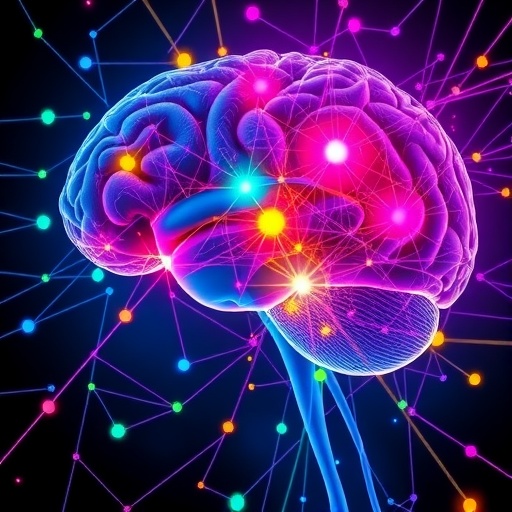In recent years, unraveling the intricate mechanisms behind autism spectrum disorder (ASD) has propelled neuroscience to explore beyond genetic mutations and into the nuanced realm of neural circuitry. A groundbreaking study published in Translational Psychiatry now sheds compelling light on how sex-specific cortical networks distinctly shape social behavior differences in an ASD model. This novel research, led by Pais, Sereno, Tomé and colleagues, not only advances our understanding of the neurobiological substrates underlining ASD but also opens tantalizing avenues for sex-tailored therapeutic approaches.
Autism spectrum disorder is marked by persistent challenges in social communication and interaction, often accompanied by repetitive behaviors and restricted interests. While extensive research has revealed genetic underpinnings and environmental triggers, the precise brain circuits mediating the hallmark social impairments remain elusive, particularly with regard to sex differences. This study dives deeply into the functional organization of cortical networks in male and female subjects displaying ASD-like behaviors, aiming to delineate how these circuits contribute to sex-specific manifestations.
Utilizing advanced neuroimaging and electrophysiological techniques in a validated animal model of ASD, the researchers mapped the cortical connectivity patterns that govern social behavior. They uncovered distinct network configurations in males and females that correlated strikingly with behavioral phenotypes. Whereas males exhibited hyperconnectivity within prefrontal regions alongside diminished synchronization with limbic areas, females displayed an opposite pattern, suggesting that divergent circuit dysfunctions underlie comparable behavioral disruptions across sexes.
This sexual dimorphism in cortical connectivity challenges the long-standing notion that ASD-related neurobiological changes are uniform, urging the field to reconsider blanket models of autism pathology. The findings imply that male and female brains may react differently to the same genetic susceptibilities or environmental insults, resulting in divergent neurodevelopmental trajectories. Such insights emphasize the necessity for sex-specific diagnostic markers and interventions rather than one-size-fits-all treatments.
Particularly intriguing is the identification of key nodes within the social cognition network that exhibit sex-dependent functional alterations. In males, aberrant activity centered on the medial prefrontal cortex appeared pivotal, potentially explaining deficits in perspective-taking and empathy often reported clinically. Conversely, in females, disruptions localized more to orbitofrontal areas, which might underpin distinct social processing anomalies such as nuanced emotion recognition challenges.
The study employed state-of-the-art viral tracing combined with optogenetic manipulations to selectively modulate these cortical hubs. By enhancing or suppressing activity within these sex-specific nodes, the authors demonstrated reversible changes in social interaction metrics. This causal evidence elevated the findings beyond correlative measures, firmly establishing these networks as critical levers for social behavior modulation in ASD contexts.
Moreover, transcriptomic analyses of neurons within these functionally identified regions revealed differential gene expression profiles between sexes, including pathways involved in synaptic plasticity, neurotransmitter signaling, and neuroinflammation. These molecular fingerprints further corroborate the notion that sex chromosomes and hormone-driven epigenetic mechanisms intricately influence ASD circuitry development and function.
The translational implications of this research are profound. Recognizing that males and females with ASD may require distinct clinical approaches aligns with emerging precision medicine paradigms. Therapeutics targeting cortical hyperconnectivity or hypoconnectivity could be tailored by sex, potentially enhancing efficacy and reducing side effects. Furthermore, early identification of sex-specific biomarkers could refine risk assessment and intervention timing.
Importantly, this work underscores the need for balanced representation of both sexes in preclinical ASD research, a practice historically underemphasized. Female subjects have often been excluded or underpowered in neuroscience studies due to assumptions about hormonal variability complicating data interpretation. This study unequivocally demonstrates that inclusion is not merely an ethical imperative but critical for scientific accuracy and application.
While focused on a rodent model, the conservation of cortical structures and behavioral correlates suggests these findings bear relevance to humans. Future investigations leveraging neuroimaging in children and adults with ASD can seek analogous sex-dependent network disruptions, validating and extending preclinical discoveries. Integration with genetic and environmental data will provide a holistic picture of autism pathophysiology.
However, several questions remain ripe for exploration. The ontogeny of these sex-specific cortical architectures during development, their interaction with endocrine factors, and their modulation by experience and therapy warrant continued scrutiny. Additionally, how these findings interface with comorbidities frequently observed in ASD, such as anxiety or attention deficits, presents an essential domain for further research.
In conclusion, the work by Pais and colleagues represents a landmark step in decoding the sex-specific neural circuitry underlying social behaviors in ASD. It challenges prevailing dogmas, highlights the complexity of brain network dysregulation, and advocates for personalized approaches in autism diagnosis and treatment. These insights not only enhance our scientific understanding but hold promises of transforming patient care and quality of life for millions affected worldwide.
As the neuropsychiatric field progresses, such integrative studies exemplify how multidisciplinary techniques—from viral neuroanatomy to molecular genetics—converge to unravel the enigmatic biology of disorders like ASD. By illuminating the cortical networks that govern social behavior through a sex-specific lens, this research invigorates hope for precision-targeted therapies that embrace the biological diversity inherent in autism spectrum disorder.
Subject of Research: Neural circuitry and sex differences in social behavior in an autism spectrum disorder model
Article Title: Sex-specific cortical networks drive social behavior differences in an autism spectrum disorder model
Article References:
Pais, M.L., Sereno, J., Tomé, V.A. et al. Sex-specific cortical networks drive social behavior differences in an autism spectrum disorder model. Transl Psychiatry 15, 251 (2025). https://doi.org/10.1038/s41398-025-03464-7
Image Credits: AI Generated




